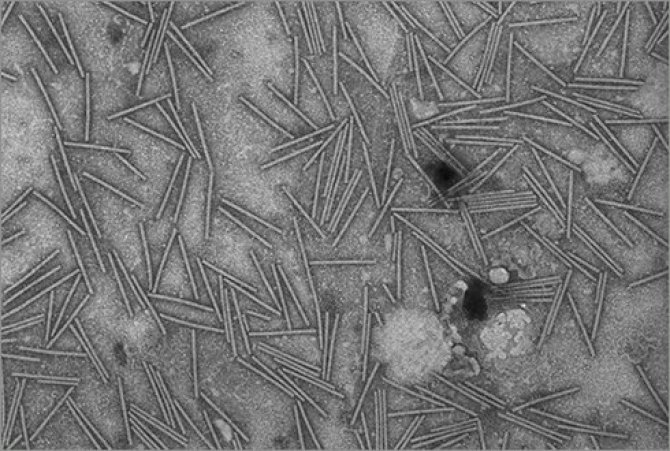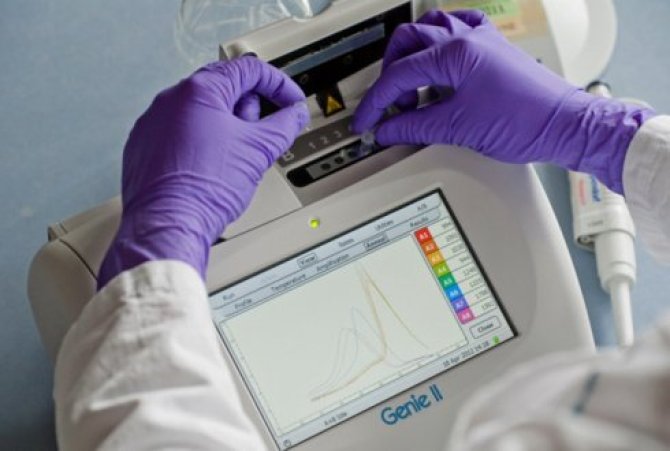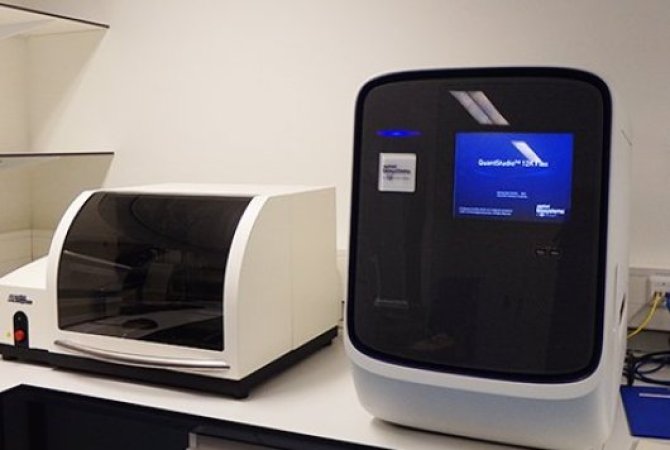
Detection platforms for diagnostics plant pathogens
Healthy crops are essential for a safe, healthy, and sustainable agriculture and contribute to sufficient healthy food and to the quality of life. Major agricultural crops, however, are threatened by various plant pests and diseases. Reliable diagnostic assays enable timely detection, identification and/or monitoring of such pests and diseases. With the development of diagnostic assays and products we are contributing to a better inventory and preservation of plant health in arable farming, horticulture, and the cultivation of ornamentals.
DAS-ELISA

The ‘workhorse’ of diagnostics. Has been a standard method for the detection of plant-pathogenic viruses and bacteria for years.en bacteriën.
Electron microscopy (EM)

Electron microscopy (EM) can magnify objects many times further than a conventional microscope. This makes EM extremely suitable for the discovery, characterisation and/or description of virus particles.
Flyer: Electron microscopy (EM) - Making the invisible visible
LAMP

Simple and rapid screening of plants for the presence of pathogens. LAMP makes use of a portable light-weight module that can easily be taken to the field or the greenhouse, or simply given a permanent position somewhere on the farm.
Modern Vision Techniques

Using innovative camera systems, plants, leaves and seeds can be quickly examined for abnormalities caused by the presence of pathogens or abiotic stress factors. Based upon fluorescence and spectrum analysis, we can observe and qualify what is not visible by the human eye. We can measure the contents and the physiology of the plant (chlorophyll synthesis) and study the physiology of a plant, but also look at the infection pathway of a pathogen tagged with GFP or RFP. These methodologies can be performed remotely and at high speed. The example shows an infection of septoria leaf blotch on a young wheat plant that is barely perceptible with the eye, but greatly effects the efficiency of photosynthesis. A false color image is used to indicate how much light can be used for photosynthesis. Green is high and red is low.
LUMINEX
Simultaneous detection of dozens of plant pathogens by using coloured paramagnetic microspheres. Two formats are available:
- Based on antibodies: suitable for the detection of viruses, bacteria and/or proteins.
- Based on DNA/RNA: suitable for the detection of viruses, viroids, bacteria, fungi and/or nematodes.
Next Gen Sequencing (NGS)
NGS maps – within a few days - all genes of microorganisms in plant material with the most advanced DNA sequencers, coupled with rapid data analysis. NGS offers unprecedented possibilities for diagnostics of plant diseases and identification of new or unidentified pathogens.
Flyer: Next Generation Sequencing (NGS) - High throughput science
TaqMan PCR

Real-time PCR where amplification of the DNA or RNA as well as visualisation of the amplification product takes place in one and the same reaction vessel. Three to four different pathogens can be detected simultaneously in a sample.